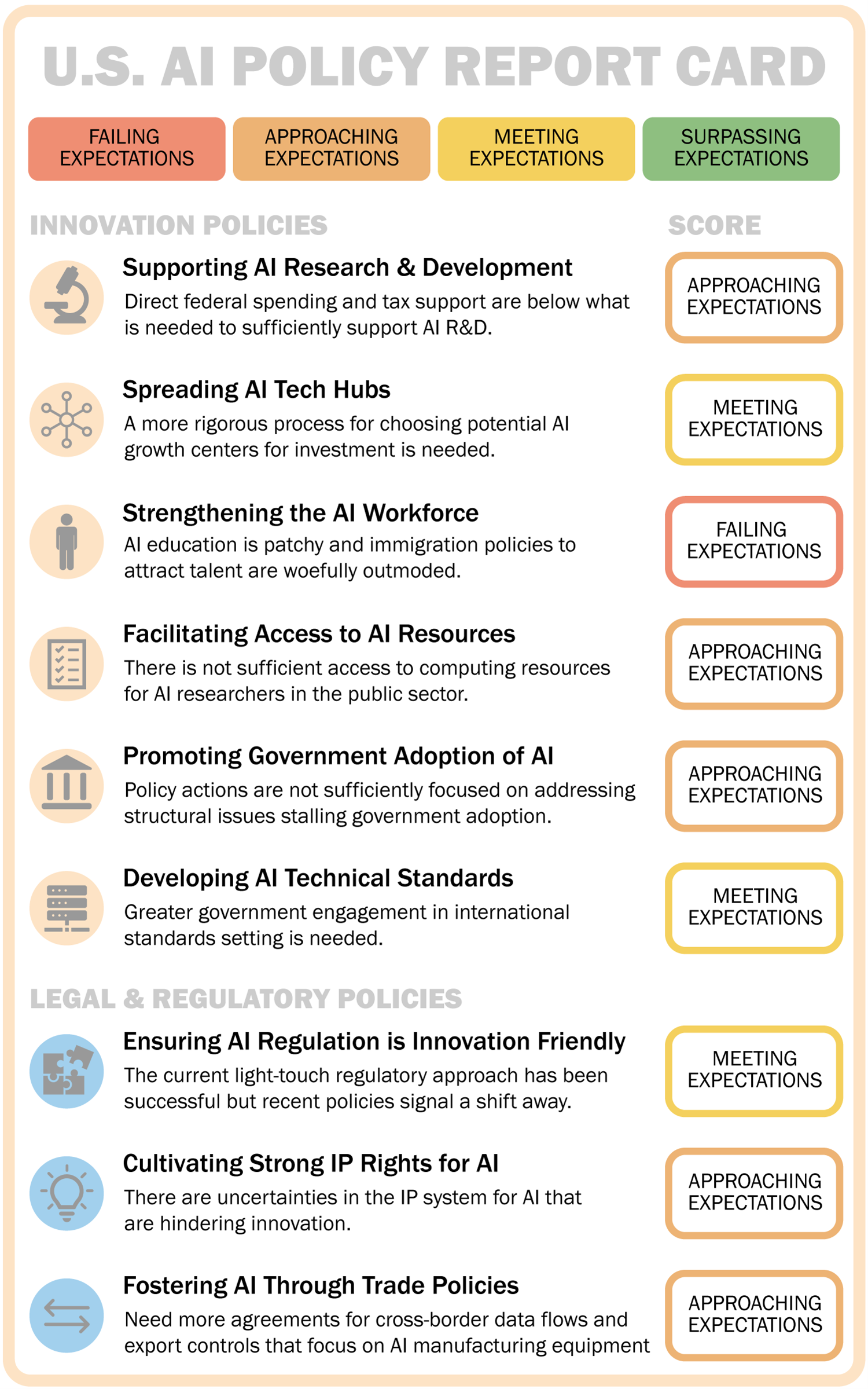US AI Policy Report Card
The 117th Congress was the most AI-focused congressional session in history with 130 AI bills proposed, so it is a good moment to take stock of U.S. AI policy accomplishments to date and identify areas where there is room for continued progress.
Executive Summary
In the United States, there are three sets of institutions that are primarily responsible for initiating, importing, modifying, and diffusing AI: private firms, publicly funded national laboratories, and universities with funding from government, industry, and donors. AI policy refers to the public means for nurturing the capabilities and activities of this AI ecosystem and optimizing its applications in the service of national goals and the public good.When government institutions and policies act properly, AI innovation flourishes. When government fails to act or misfires, so too does AI innovation.
This report analyzes how the United States is performing across nine of the most prominent policies the U.S. government uses to support AI innovation and competitiveness. We split these policies into two groups. First are innovation policies that directly spur AI innovation and competitiveness. These include six types of policies that support AI research, strengthen the AI workforce, spread AI tech hubs across the country, facilitate access to AI resources, promote government adoption of AI, and help develop technical standards for AI. Second are legal and regulatory policies that shape the environment for AI innovation. These include three types of policies that regulate the use of AI systems, incentivize AI activity through intellectual property (IP) rights, and support AI development through international trade.
The following report card summarizes our findings for each policy area and provides an achievement level. To be failing expectations in a policy area means the policies in place—or lack thereof—are causing the United States to fall behind its competitors. To be approaching expectations means the policies in place are only partially or inconsistently bolstering U.S. AI innovation and competitiveness. To be meeting expectations means the policies in place are keeping the nation on par with its competitors. And to be surpassing expectations means the policies in place are properly supporting U.S. AI leadership. In the following sections, we provide detailed recommendations for how U.S. policymakers can improve.


